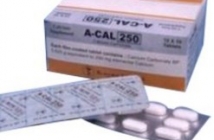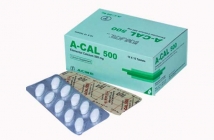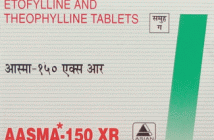Home / Categories / EPITAN-30MG

EPITAN-30MG
(20STX10T)
PHENOBARBITONE-30MG
BENZODIAZEPINES
RELIANCE FORMULATION
Product Details
Ketoconazole
A to Z Drug Facts
Ketoconazole
Action
Indications
Contraindications
Route/Dosage
Interactions
Lab Test Interferences
Adverse Reactions
PrecautionsPatient Care Considerations
Administration/Storage
Assessment/Interventions
Patient/Family Education
(KEY-toe-KOE-nuh-zole)NizoralClass: Anti-infective/antifungal
 Action Impairs synthesis of ergosterol, allowing increased permeability in fungal cell membrane and leakage of cellular components.
Action Impairs synthesis of ergosterol, allowing increased permeability in fungal cell membrane and leakage of cellular components.
 Indications Treatment of susceptible systemic and cutaneous fungal infections.
Indications Treatment of susceptible systemic and cutaneous fungal infections.
Topical: Seborrheic dermatitis; tinea corporis; tinea cruris; tinea pedis; tinea versicolor.
 Contraindications Fungal meningitis.
Contraindications Fungal meningitis.
 Route/Dosage
Route/Dosage
ADULTS: PO 200 to 400 mg qd. CHILDREN > 2 YR: PO 3.3 to 6.6 mg/kg/day. Treatment may last from 1 wk to 6 mo, depending on infection. ADULTS: Topical Apply to affected and immediate surrounding area qd for 2 to 4 wk.
 Interactions
Interactions
Antacids: Increased gastric pH may inhibit ketoconazole absorption; separate administration by ³ 2 hr. Benzodiazepines (eg, midazolam): Plasma levels of benzodiazepines may be increased and prolonged. Corticosteroids: Increased bioavailability and decreased clearance of corticosteroid. Cyclosporine: Increased cyclosporine concentrations. Didanosine, histamine H2-receptor antagonists (eg, cimetidine), proton pump inhibitors (eg, omeprazole): May decrease ketoconazole absorption. Dofetilide: Elevated plasma levels of dofetilide may increase the risk of life-threatening cardiac arrhythmia. Nisoldipine, protease inhibitors (eg, indinavir), tacrolimus, tolterodine: Plasma levels may be elevated by ketoconazole, increasing the risk of side effects. Rifampin: Decreased serum levels of either drug; avoid concomitant use. Theophylline: Decreased theophylline serum concentrations. Warfarin: Increased anticoagulant effect.
 Lab Test Interferences None well documented.
Lab Test Interferences None well documented.
 Adverse Reactions
Adverse Reactions
CNS: Headache; dizziness; somnolence. DERM: Pruritus; urticaria. Topical use: Severe irritation, stinging, and itching. GI: Nausea; vomiting; abdominal pain. GU: Oligospermia (with high doses); impotence; gynecomastia. HEPA: Hepatitis.
 Precautions
Precautions
Pregnancy: Category C. Lactation: Undetermined. Children: PO: Safety and efficacy in children < 2 yr not established. Topical: Safety and efficacy not established. Anaphylaxis: Has occurred after the first dose. CN infections: Drug penetrates CSF poorly. Although high doses have sometimes been used in CNS fungal infections, this is not indicated use. Gastric acidity. Ketoconazole requires acid environment for dissolution and absorption. Hepatotoxicity: Hepatotoxicity, with rare fatalities, has occurred. Use with caution in patients receiving other potentially hepatotoxic drugs, on long-term therapy, and with a history of liver disease. Hormone levels: May lower serum testosterone or suppress adrenal corticosteroid secretion.
PATIENT CARE CONSIDERATIONS
 Administration/Storage
Administration/Storage
- Give oral drug with food to minimize GI upset. Administer 2 hr before antacid is given.
- Tablets can be crushed and mixed with small amount of food or fluid.
- In achlorhydria, dissolve tablet in 4 ml of 0.2 Normal Hydrochloride. Have patient use glass or plastic straw to avoid contact with teeth. Follow with glass of water.
- Apply topical medication once daily to cover affected and immediately surrounding area. Avoid contact with eyes.
- Store at room temperature in tightly closed container. Protect from light.
 Assessment/Interventions
Assessment/Interventions
- Obtain patient history, including drug history, and any known allergies. Note hepatic impairment and sensitivity to antifungal agents.
- Ensure that liver function tests have been obtained before beginning therapy, and monitor regularly during treatment.
- Assess for jaundice, anorexia, and hepatotoxicity. Notify physician immediately if these symptoms occur.
- Notify physician if severe irritation, itching, or stinging occurs after topical application.
 Patient/Family Education
Patient/Family Education
- Instruct patient that if a dose is missed, take it as soon as possible. If several hours have passed or if close to the time of next dose, do not double up. Notify physician if more than 1 dose is missed.
- Advise patient not to take medication with antacids. If antacids are required, take ketoconazole 2 hr before antacid.
- Emphasize importance of completing full course of therapy, even if signs and symptoms resolve. Advise patient that maintenance therapy may be required for chronic infections.
- Instruct patient to notify physician if severe irritation, itching, or stinging occurs after application.
- Instruct patient to report the following symptoms to the physician: Fatigue, loss of appetite, nausea, vomiting, yellowing of skin, dark urine, pale stools, abdominal pain, fever, diarrhea.
- Advise patient that drug may cause drowsiness and to use caution while driving or performing other tasks requiring mental alertness.
- Instruct patient not to take otc medications, including antihistamine, without consulting physician.
Books@Ovid
Copyright © 2003 Facts and Comparisons
David S. Tatro
A to Z Drug Facts





